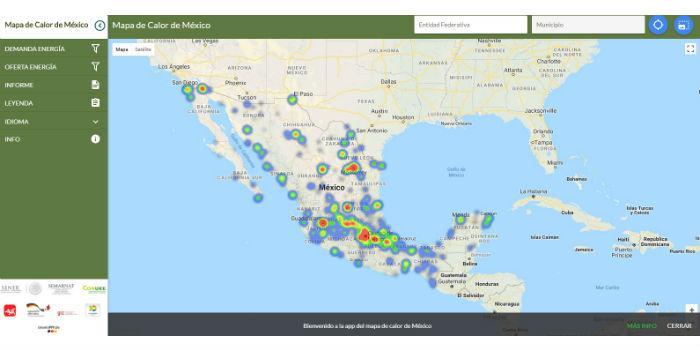 Mexico. Recently, the "Heat Map of Mexico" was presented, a tool that allows georeferencing the potential areas for the development of waste heat recovery projects, mainly in industry, and the use of renewable energies.
Mexico. Recently, the "Heat Map of Mexico" was presented, a tool that allows georeferencing the potential areas for the development of waste heat recovery projects, mainly in industry, and the use of renewable energies.
The above, as a result of the joint work between the Ministry of Energy (Sener), the Ministry of Environment and Natural Resources (Semarnat), the German Cooperation for Sustainable Development in Mexico (GIZ), COGENERA Mexico and Conuee.
In the event held on July 31, Mr. Israel Jáuregui, Deputy Director General of Management for Energy Efficiency of this Commission, and Eng. José Ernesto Navarro, Director of Industrial Regulation and Registry of Emissions and Transfer of Pollutants of the Semarnat, they explained the importance of the potential use of thermal energy, as well as the importance of having accurate information that allows giving certainty to the development of projects through different technologies, such as cogeneration, energy efficiency and renewable energies.
Likewise, the specialist of the AESA Consultant, Eng. María Silvia Yuste, who supported the development of this tool, explained the methodology and technological considerations for the collection of information, its analysis and development of the database, while Eng. Raimon Argemí, Managing Director of the firm itself, presented the opportunities focused on exploring new markets based on energy policies and the promotion of more specific low-carbon economies.
Finally, Eng. Lorena Espinosa, Coordinator of the project by the GIZ, presented the web tool and functionalities of the "Heat Map" online.
This information allows to characterize, in an estimative way, the thermal demand of each consumer and to analyze the different supply alternatives through clean technologies. In addition, it allows to consult the thermal consumption and potential energy suppliers, at the municipal, state level or in certain areas defined by each user.
It is important to mention that this first effort had public information from agencies such as Sener, Semarnat, Conuee, INEGI and CRE, among others.
Access here the Heat Map in Mexico, where you can see the demand, supply and potentials of different technologies for thermal energy: http://mapacalormx.dyndns.org:8079/














